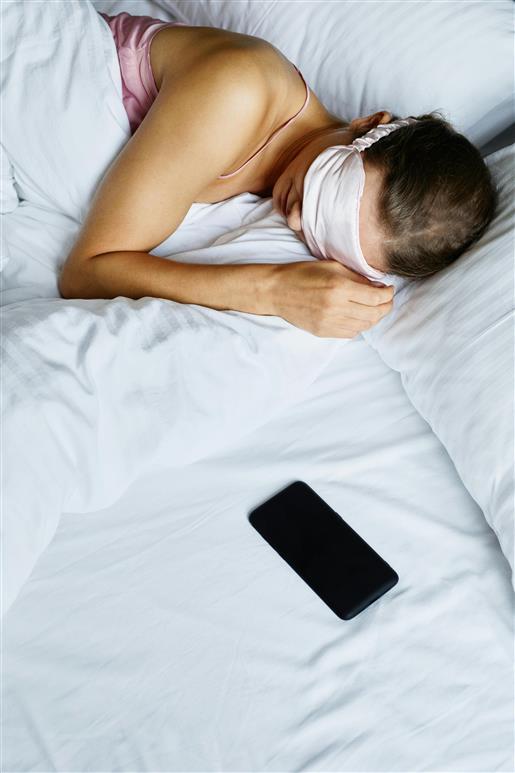
In a world where screens flicker in every direction and notifications punctuate every hour, the concept of a tech-free zone once sounded like a novelty. Now, it feels increasingly like a necessity. From quiet corners in cafés to enforced no-phone hours in households and “digital detox” retreats, we’re witnessing a growing movement to carve out intentional spaces away from our devices. Some even call them “digital curfews”—not in the Orwellian sense, but as boundaries people and institutions are setting in response to digital fatigue.
The question is: are we entering an era where opting out of tech, at least temporarily, becomes just as common—and just as deliberate—as logging in?
The Saturation Point
It’s hard to argue we haven’t reached a tipping point. According to recent studies, adults in developed countries now spend between 7 and 10 hours a day in front of screens. For younger generations, especially Gen Z and Gen Alpha, the smartphone is not a tool—it’s the lens through which much of life is experienced. That lens can sharpen connection, but it can also distort it.
Sleep disruption, attention fragmentation, rising anxiety, and declining face-to-face communication have all been linked to excessive screen time. What was once heralded as convenience now increasingly feels like overload.
Rather than waiting for regulators or tech companies to address the problem, many individuals and communities are drawing their own lines. That’s where the idea of tech-free zones and digital curfews comes in—not as a rejection of technology, but as an attempt to rebalance the relationship.
What Counts as a Digital Curfew?
The term “digital curfew” conjures different images depending on who you ask. For some, it’s a rule: no phones after 9 PM. For others, it’s a place: a classroom, a yoga studio, or even an entire restaurant where phones are politely banned.
Here’s what this movement currently looks like in practice:
- Schools and Campuses: Some schools have started introducing tech-free policies during lunch breaks or in specific classrooms to encourage social interaction. Others are experimenting with full device lockdowns during school hours, with mixed results.
- Workplaces: While many companies once pushed constant connectivity as a sign of productivity, some are now encouraging employees to disconnect after work. France famously passed a “right to disconnect” law in 2017, and other nations are watching closely.
- Families: In homes, especially those with young children, digital curfews are becoming common. Parents establish screen-off times to protect sleep cycles and encourage real-world play. Tools like screen-time apps and Wi-Fi timers are increasingly standard.
- Public Venues: Restaurants, retreats, gyms, and even some hotels are embracing tech-free zones to foster presence and attention. One London café went viral for offering a 10% discount to customers who put their phones in a lockbox while dining.
- Events and Gatherings: At weddings, parties, and concerts, “no phone” policies are popping up to preserve intimacy and prevent over-documentation. Some performers now ask audiences to experience the moment without the distraction of a screen.

The Emotional Driver: Not Rejection, But Relief
What’s fueling this shift isn’t anti-tech sentiment. Most people who create digital curfews still carry smartphones, still stream shows, still live and work online. But increasingly, they’re looking for structured relief from the always-on culture.
This isn’t about being a Luddite. It’s about preserving attention, sleep, creativity, and relationships—resources that algorithms often consume faster than we realize.
In many cases, these boundaries don’t arise from a philosophical stance but from exhaustion. People aren’t quitting their devices; they’re trying to carve out safe zones to think, breathe, and reset.
The Role of Tech Companies: Helping or Hindering?
Ironically, some of the very companies that helped create the attention economy are now offering tools to manage it. Apple’s Screen Time and Google’s Digital Wellbeing dashboards allow users to monitor and limit app usage. Instagram and TikTok offer reminders to take breaks. Some devices even come with a built-in “focus mode” to silence distractions.
Still, critics argue that self-regulation tools often shift responsibility to the user without changing the underlying design incentives. Apps are still built to keep you scrolling. Platforms still profit from time spent, not time well spent.
Digital curfews offer a more external form of control—set by context, community, or environment rather than personal willpower. For many, that structure is what finally makes disconnection possible.
Resistance and Pushback
Of course, not everyone is on board. For some, tech-free policies feel restrictive or even judgmental. Teenagers, for instance, often push back against screen time limits, seeing them as arbitrary or authoritarian. Some workers, especially in remote setups, worry that “disconnecting” will make them seem less committed.
And there’s a class dimension too. The ability to unplug is a form of privilege. For people in gig work, customer service, or logistics, being reachable is often a condition of employment. Parents who use screens to occupy children while they cook, work, or rest may not have the luxury of zero-device evenings.
That means any cultural shift toward tech-free living must also acknowledge who can afford to unplug—and who can’t.
Rituals of Disconnection
Despite the hurdles, disconnection is becoming a ritual. Tech-free Sunday mornings. Phone baskets at the dinner table. Bedtime routines that start with switching to airplane mode.
These small acts aren’t just about reducing screen time. They’re about reclaiming control, carving out time that isn’t mediated by algorithms, and being present with others—or simply with oneself.
In a world increasingly measured in likes, swipes, and pixels, these rituals are a quiet form of resistance.
Is This a Trend—or the Beginning of a Norm?
Right now, digital curfews and tech-free zones are still optional. But as the health impacts of screen addiction become clearer, they may start to resemble other wellness norms—like quitting smoking, moderating sugar, or practicing mindfulness.
We may eventually see more public spaces adopt tech-off policies, more schools codify phone-free hours, more companies embed digital hygiene into workplace culture. What feels niche today could become expected tomorrow.
And unlike many digital trends, this one doesn’t require new hardware or software. It asks for something far harder: restraint.

Final Thoughts
The rise of digital curfews isn’t about rejecting technology. It’s about renegotiating the terms of engagement. In carving out tech-free zones, people are pushing back against a culture that has normalized constant connection—and rediscovering the value of absence, silence, and time unstructured by screens.
The future may still be digital. But in some moments, increasingly by choice, it won’t be.






